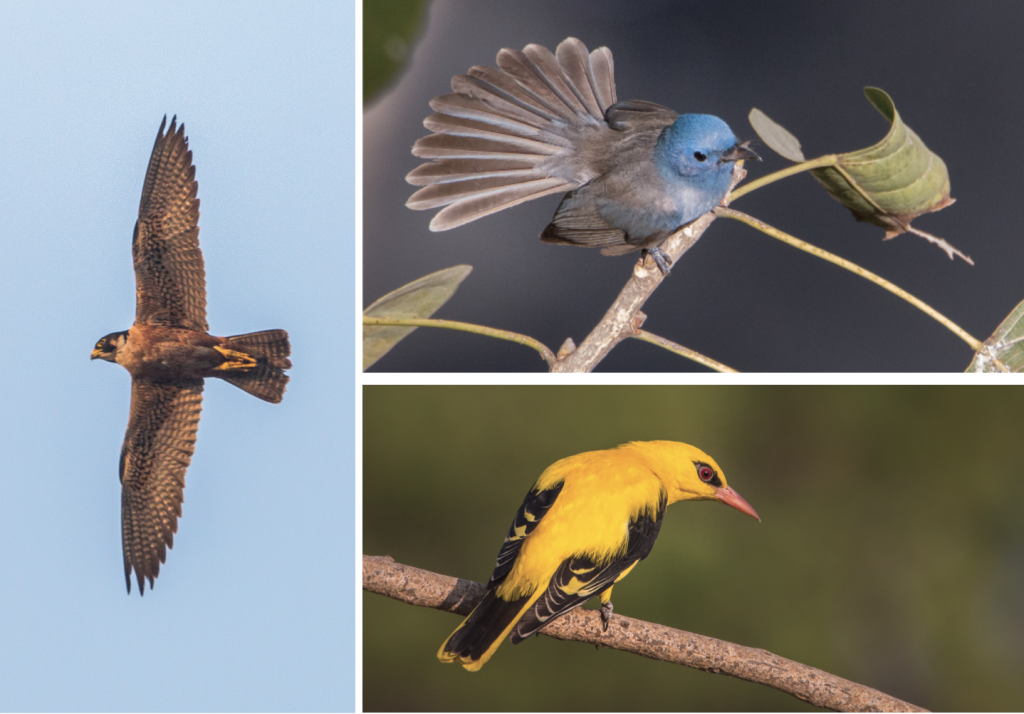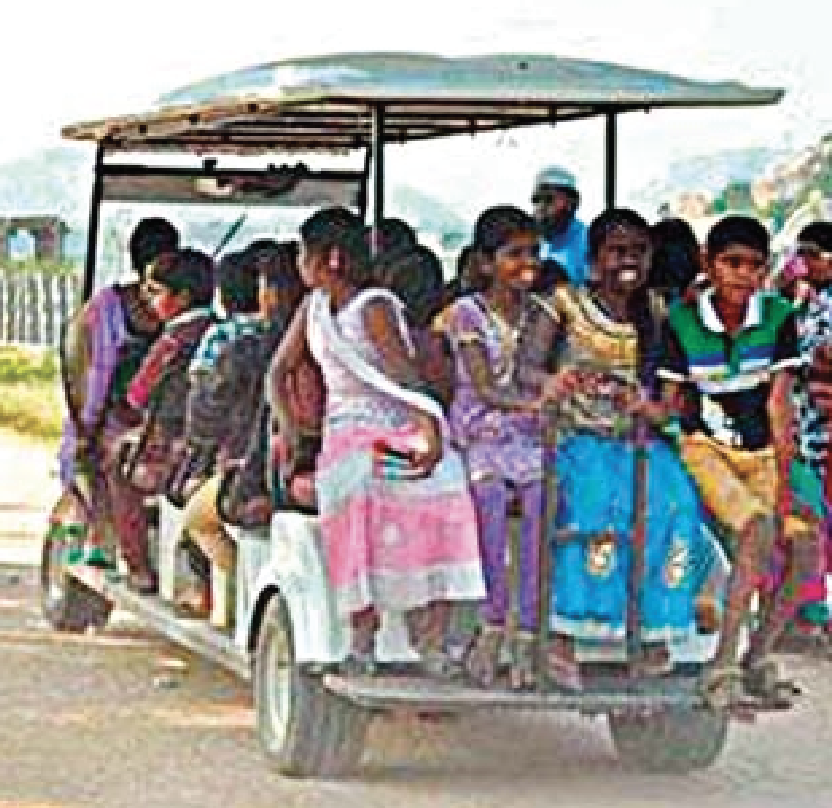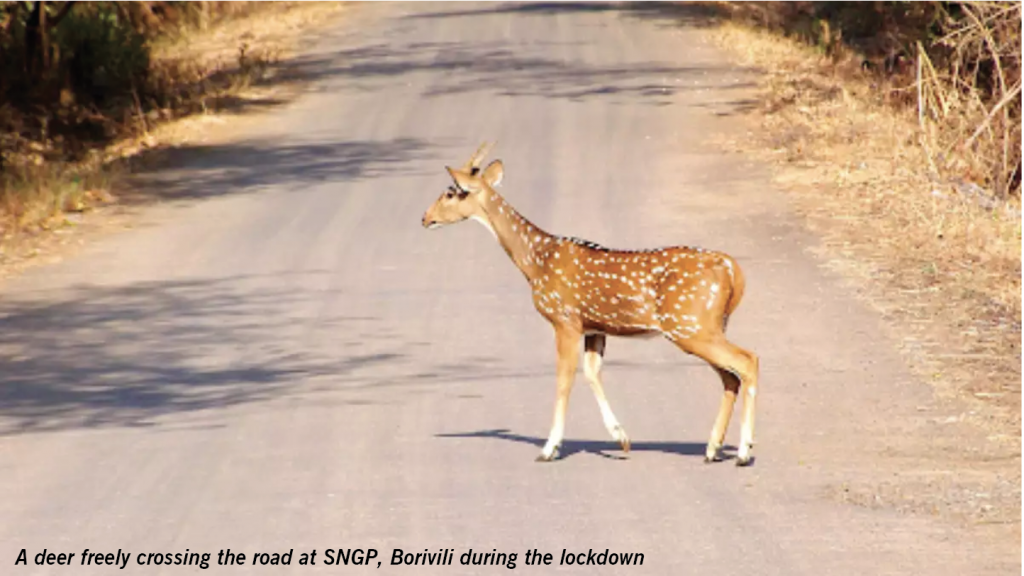The national lockdown that came into effect on 25 March 2020 triggered a myriad fears among citizens who weren’t sure what to expect in the days to come. The lockdown drastically affected life across the country and the absence of vehicles on city roads brought about some welcome changes in the environment that many hoped would stay longer. Now, as the country struggles to return to normalcy, it’s important to appreciate the lessons learnt during the lockdown and take them forward in the ‘new normal’.
Within days of the first phase of the lockdown, the air in Mumbai suddenly seemed easier to breathe. Residents, who always complained of poor air quality, striving for green and open spaces in the city, were relieved and happy. With the roads devoid of traffic and the concurrent noise pollution, Mumbai’s residents, for the first time in years, saw sparrows, even peacocks. Pigeons, black kites, sparrows and crows began to swoop down till street levels in urban zones. After a long time, Mumbaikars saw birds flying in traffic zones, some even sitting on roads making their noisy presence felt.
“It was a month after the first lockdown when one morning I saw a bunch of sparrows in my balcony. I don’t remember seeing these birds in a long time,” says Mumbai-based chef Jenny Fernandes. “In fact, I was almost certain that sparrows would be extinct by now or may be confined only to villages and smaller towns with lesser people,” she maintains.

Metropolis Mumbai turns a new leaf
Jenny was not alone in realising how nature responded to minimal human activity and interference. Residents in Mumbai’s Walkeshwar area were in for a colourful surprise. “It was in the second week of April when we saw peacocks in our society prancing around,” says Ritika Shah. Not only did the residents were thrilled at glimpse of India’s national bird, netizens too went into a frenzy sharing images of the national bird atop parked cars in full bloom, chasing peahens all over the zone. “Even my 10-year-old son realised that these birds came down to the roads from the adjoining Hanging Gardens as there was no traffic to impede their movement.”
A little ahead, at Mumbai’s iconic Marine Drive, the residents sighted the Indian Ocean Humpback Dolphins in the Arabian Sea coastline off South Mumbai generating posts on social media and trending hash tags. The Indian Ocean Humpback Dolphins have been visible to the Mumbaikars from way back but ‘locked’ residents could behold from out of their windows pods of Dolphins jumping in and out of the sea waters.
“There’s no doubt it’s basically the absence of water traffic and the concurrent human activity in the zones that has led to the dolphins coming closer to land,” says Chowpatty resident and interior designer Ashish Ramani. “The dolphins are now visible everywhere in the waters. I see them frolicking in the waters off Marine Drive almost daily.”
Not only birds and dolphins, Mumbai’s Sassoon Docks, famous for its commercial fishing activity, also had dolphins inching much closer to land. In the absence of commercial activities in Sassoon Docks, the entire zone is cleaned out and free of encumbrances and pollutants. Why, the waters that were layered with oil spills and fish waste are now a lot clearer too in the lockdown.
National Park welcomes ‘new lessons’
Mumbai’s Sanjay Gandhi National Park (SGNP), the only national park that lies ‘within’ a city, teemed with life during the lockdown. According to Chief Conservator of Forests and Director of SGNP Anwar Ahmad, “The lockdown infused much-needed life in the national park.” With humans confined to their homes, the fauna had reclaimed its lost space. The birds too enjoyed human absence while leopards emerged from their bushes even during the day. The park boasts of 251 species of birds, 38 species of reptiles, 5,000 species of insects and 40 species of mammals that stay deep in the jungle. It was never easy to spot leopards, cheetals and sambhars during a visit to the park.
“I really hope we can limit human interference with nature, at least in places like the National Park. As it is we have encroached upon the land that belongs to these birds and animals. Now as the lockdown phases out, it’s important to ensure they don’t lose this new-found freedom,” feels Mumbai-based blogger Manasi Nanda.
So when SGNP re-opened mid-October for morning walkers and with guidelines, the government went an extra mile implementing the lessons learnt during the lockdown. Entry of private vehicles will be prohibited in to the park when it reopens for tourists after the lockdown. Instead, 16 battery-operated buses will operate to ferry people inside the park, especially to Kanheri Caves, one of the most popular tourist destinations inside the park. SGNP Director G Mallikarjun maintained private vehicles disturbed the animals venturing out for prey or water and these restrictions will stop that.
Air Quality best in decades
An analysis published by the System of Air Quality Weather Forecasting and Research (SAFAR) maintained that traffic pollution levels fell by three-fourth across Mumbai for period between March 24 and April 25 as compared to the preceding month and in the period of February 20 and March 20. The analysis maintained that the month-wise comparison of air quality levels for four cities – Mumbai, Delhi, Pune and Ahmedabad – also revealed that the highest reduction was witnessed in nitrogen dioxide (NO2) levels for Pune at 70 per cent, followed by Mumbai (69 per cent). Delhi and Ahmedabad respectively recorded a 33 per cent and 30 per cent slump.
India embraces positive lockdown outcomes
The lockdown gave a much-needed break to ‘nature’ in towns and cities bustling with human activity and interference. With reduced industrial activity, no vehicles on roads, nature responded immediately and how. There’s a new sense of responsibility that people are now exhibiting as they got a chance to appreciate nature in its full glory during the lockdown. Many state governments are taking care in framing guidelines for opening up industries and activities post lockdown. Karnataka government, for example, reopened several tourist destinations including Mysuru Palace, Virupaksha Temple at Hampi in Ballari, Chamundeshwari Temple atop Chamundi Hills, etc. At Hampi, authorities are in the process of lining up ten new buggies for tourists who wish to visit different locations in Hampi. According to the Hampi World Heritage Area Management Authority (HWHAMA), the process to ply rail buses has started too.
Hampi was opened for tourists from June 6 after a lockdown of nearly three months. In the last two weeks hundreds of tourists have visited Hampi and surrounding areas. “This is a large tourism project initiated by the HWHAMA in the recent times. The buggies have already arrived at Ballari and soon they will be brought to Hampi. The tourists will have much safer and easier option of visiting the monuments in the buggies. Currently there are eight buggies and ten more will be added to the fleet,” said an official. Additionally, provisions are being made to promote eco-tourism and reduce the carbon footprint of tourists in the zone. Industry players are roping in low carbon footprint electric bicycle rides for sightseeing in the zone. At the popular pilgrimage site of Anjanadhri Hills in Koppal district, near Hampi, a ropeway is set to be built to ferry visitors to Lord Anjaneya temple to enhance visitors experience and help mitigate losses in the future.

The Lahaul Valley in Himachal Pradesh had imposed a blanket ban on tourism in the valley after a sudden spike in Covid cases. When the Rohtang Tunnel reopened, a swarm of tourists flocked to the region. ‘Save Lahaul‘, a local NGO working for the preservation of the environment, ecology and local tribal culture has been protesting against the unrestricted influx of the tourists to Lahaul and Spiti. Tribal scholar and director, Institute of Vocational Studies at HP University, Shimla has been asking for special packages from the central government that ‘develop tourism but also take steps for preservation of the ecology and distinctive tribal culture’. Locals are more perceptive and more vocal about assimilating these concerns in the new guidelines, post lockdown.
This generation has now witnessed nature in its full grandeur, sans the modern-day vehicular, air and water pollution, one that had only been heard about. And, we must salvage it, this time around.

